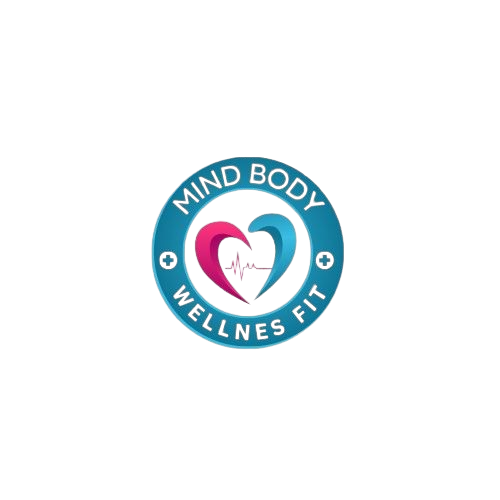Chronic pain is a pervasive condition that affects millions of people worldwide. It’s more than just a physical discomfort – it can drastically impact your quality of life, emotional health, and daily functioning. Unlike acute pain, which serves as a warning signal for injury or disease, chronic pain persists for six months or longer, often without a clear cause. This ongoing pain can cause intense suffering, disrupt life plans, and create significant emotional and financial burdens. However, with the right approach to chronic pain treatment, individuals can manage their symptoms and regain control of their lives.
Understanding Chronic Pain
To begin, it’s essential to understand the difference between acute and chronic pain. Acute pain is short-term and typically results from an injury or illness, warning the body of potential harm. Once the tissue heals, the pain usually subsides.
Chronic pain, on the other hand, persists for six months or longer. It’s no longer linked to active tissue damage and doesn’t serve a protective role. While it may have initially been caused by an injury or illness, the pain continues long after the body has healed, often due to changes in the nervous system or ongoing emotional stress.
Chronic pain can take many forms, including:
- Joint pain – Often caused by conditions like arthritis, this pain affects the muscles, tendons, or bones in the joints.
- Nerve pain – This occurs when nerves become damaged or dysfunctional, often due to conditions like diabetes or neuropathy.
- Back pain – Chronic back pain is commonly caused by muscle strain, herniated discs, or conditions like sciatica.
- Headaches – Conditions such as migraines or tension headaches can cause long-lasting pain that interrupts daily activities.
Understanding the specific type of chronic pain you’re experiencing is crucial in determining the most effective treatment options.
The Neurophysiological Aspect of Chronic Pain
Chronic pain often has a neurophysiological origin. Over time, the brain may become hypersensitive to pain signals, even when no physical damage is occurring. This phenomenon is known as “central sensitization.” In cases of chronic pain, the brain’s pain pathways can remain on high alert, amplifying pain signals and prolonging discomfort.
This change in how the brain processes pain can make managing chronic pain more complex, requiring both physical and psychological treatment strategies.
Treatment Options for Chronic Pain
Pain Medications: Medications are often the first line of defense in treating chronic pain. Over-the-counter medications like ibuprofen or acetaminophen can help manage mild pain, while stronger prescription medications, including opioids and muscle relaxants, may be necessary for more severe cases. However, these medications come with risks, such as addiction or side effects, so they should be used with caution.
Injections and Nerve Blocks: For localized chronic pain, injections or nerve blocks can provide targeted relief. These procedures involve injecting medication directly into the affected area or around specific nerves, blocking pain signals and reducing inflammation. This method is commonly used for back pain or joint pain.
Non-Medical Treatment
Physical Therapy: Physical therapy is essential in helping individuals with chronic pain regain strength, mobility, and function. A skilled physical therapist can create a personalized exercise plan to improve flexibility and reduce pain. Regular movement is crucial, as prolonged inactivity can worsen pain and lead to muscle weakness.
Cognitive Behavioral Therapy (CBT): CBT is a form of psychotherapy that helps individuals change negative thought patterns that may contribute to the perception of pain. By teaching pain coping strategies and relaxation techniques, CBT can help reduce the emotional impact of chronic pain and improve mental well-being.
Mindfulness and Relaxation Techniques: Mindfulness practices, such as meditation and deep breathing exercises, can help manage chronic pain by reducing stress and promoting relaxation. These techniques help individuals stay focused on the present moment, preventing the pain from overwhelming them emotionally.
Alternative Therapies
Acupuncture: Acupuncture involves inserting thin needles into specific points on the body to stimulate nerves and release endorphins, the body’s natural painkillers. This ancient practice has been shown to reduce pain and improve overall well-being for many people with chronic pain.
Massage Therapy and Chiropractic Care: Massage therapy can help alleviate muscle tension and improve blood circulation, reducing pain in areas like the back, neck, and joints. Chiropractic care, which involves spinal manipulation, can also be beneficial in treating back pain and improving alignment.
Herbal Remedies and Supplements: Herbal supplements like turmeric, ginger, and capsaicin are believed to have anti-inflammatory properties that can help alleviate chronic pain. Always consult with a healthcare provider before starting any new supplement regimen.
The Role of Lifestyle Changes in Managing Chronic Pain
In addition to medical treatments, making lifestyle adjustments is crucial for managing chronic pain long-term.
Exercise and Movement: Regular exercise is one of the most effective ways to reduce chronic pain. Activities such as swimming, walking, and yoga help improve flexibility, strengthen muscles, and reduce stiffness, ultimately making it easier to manage pain.
Nutrition: Certain foods have anti-inflammatory properties that can help alleviate chronic pain. A diet rich in fruits, vegetables, whole grains, and healthy fats can reduce inflammation and support overall health.
Sleep Hygiene and Stress Reduction: Getting enough sleep is essential for pain management. Poor sleep can exacerbate chronic pain, while good sleep allows the body to heal and recover. Practicing relaxation techniques before bedtime can help improve sleep quality. Managing stress is equally important, as chronic stress can increase pain sensitivity.
Addressing Emotional and Mental Health in Chronic Pain
Chronic pain is not just a physical experience – it can also affect mental health. Conditions like anxiety and depression are common in individuals with chronic pain. These conditions can amplify pain perception and create a cycle of suffering.
Therapies like Cognitive Behavioral Therapy (CBT) can help individuals break this cycle, teaching them how to manage emotions and stress in healthy ways. In addition, building a strong support system, including friends, family, and mental health professionals, is key to maintaining emotional well-being.
The Family’s Role in Chronic Pain Treatment
Chronic Pain Treatment affects not just the individual but also their family and loved ones. Open communication and understanding are essential in maintaining healthy relationships. Family members can provide emotional support, help with daily tasks, and encourage participation in treatment plans.
Long-Term Strategies for Living with Chronic Pain
Living with chronic pain requires a comprehensive, long-term strategy. Setting realistic goals, pacing activities, and focusing on improving quality of life are key to managing pain over time. It’s important to remember that while chronic pain may never completely go away, with the right treatment and mindset, individuals can still lead fulfilling, active lives.
Takeaway
Chronic pain may seem overwhelming, but with the right approach to treatment, it’s possible to manage symptoms and regain control of your life. From medication and physical therapy to lifestyle changes and emotional support, there are many ways to reduce the impact of chronic pain. If you’re struggling with chronic pain, consider exploring these options and consulting with a healthcare professional to develop a personalized treatment plan.






